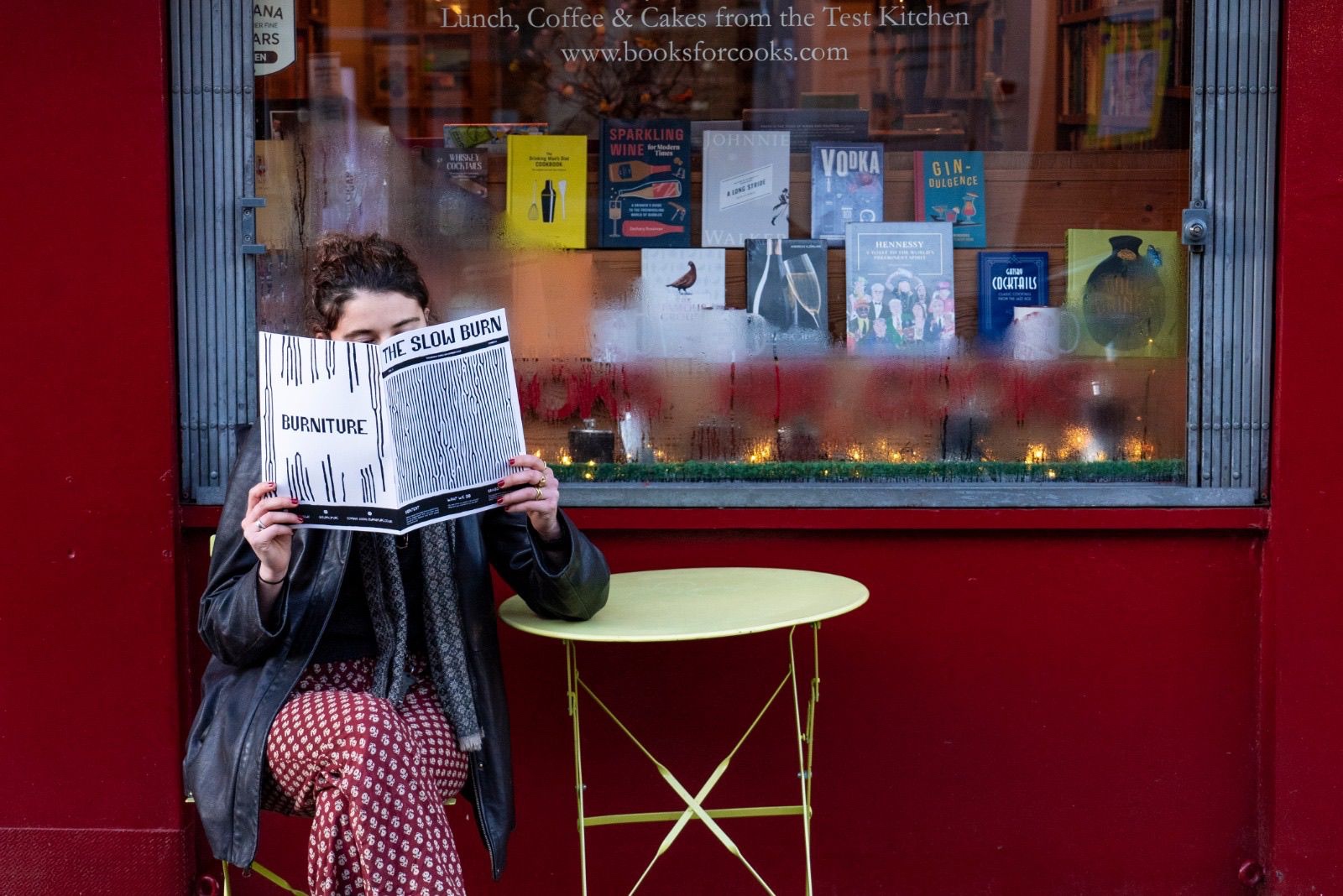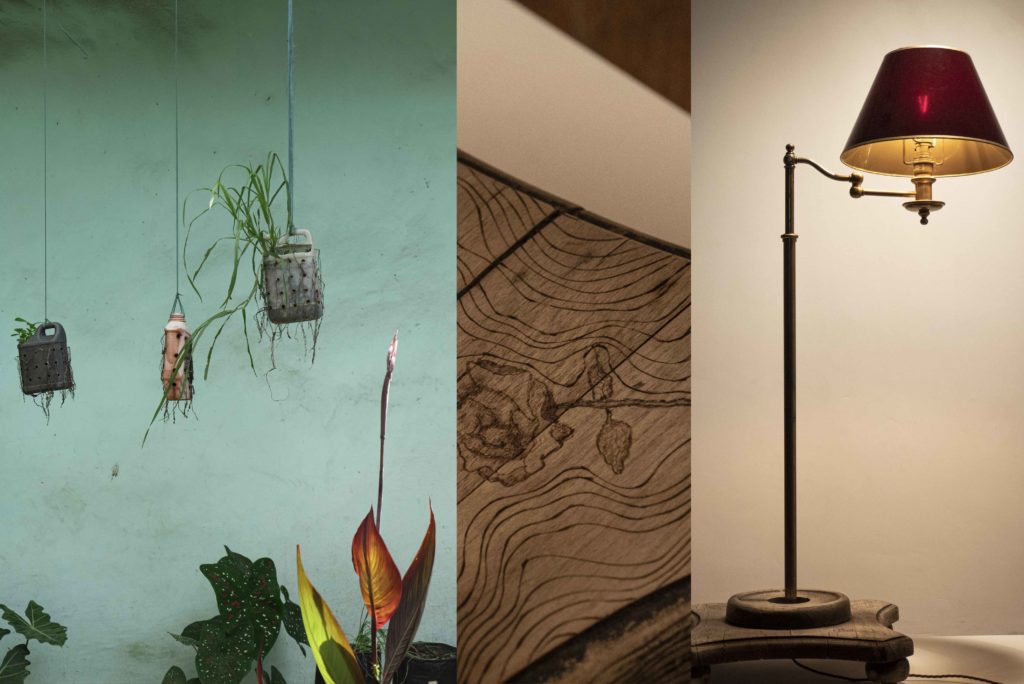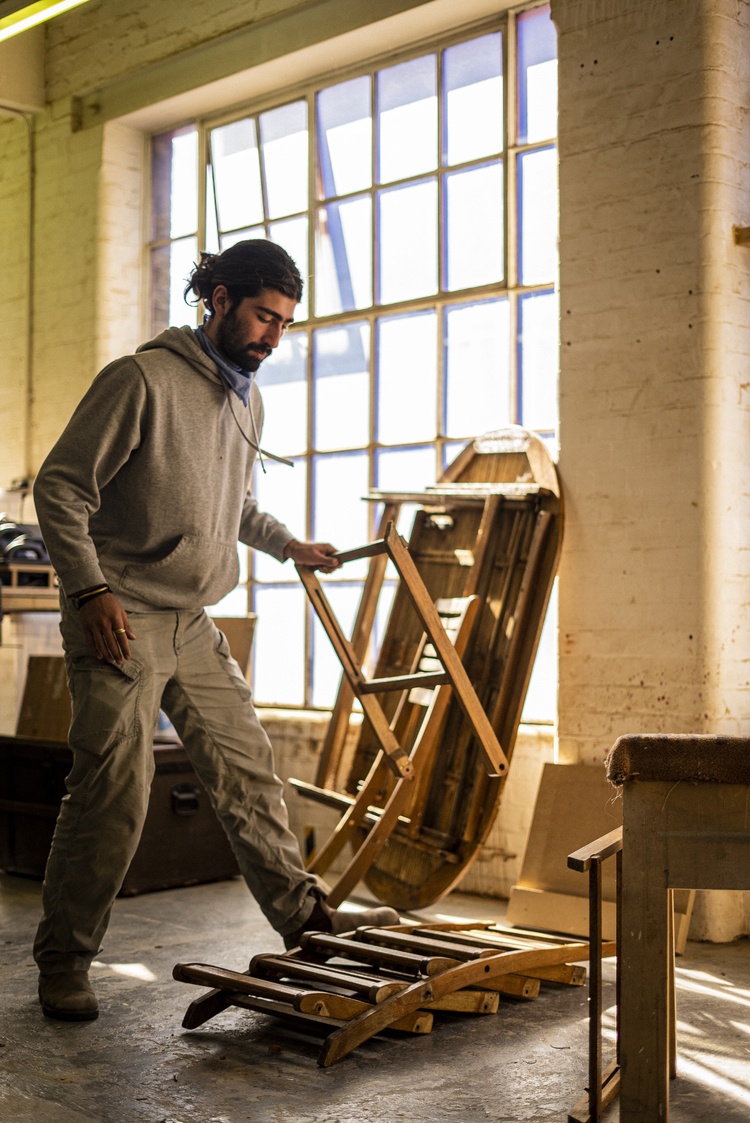‘Our lives don’t need more things, things need to be given more lives’ read a corkboard beckoning me into the exhibition by Burniture, a new collective working with furniture that is skipped, unwanted, broken, about to be burnt…
I am no stranger to street-found furniture, but this cross-disciplinary group combine skills from their fields of art, architecture, carpentry, design, film, music, photography and apparel to creatively reconstruct and position upcycled pieces. Their way tells you of the destruction while creating a desire for something different.

Mending not only materials but minds, did I mention that the collective also brings experience from work in behavioural analytics? For me, the exhibition spoke to the complexity of our emotional responses to things, which help to perpetuate the linear economy of take, make, and waste. Things play many different parts in our lives, and we attach them to certain feelings, from exciting and new to space-occupying baggage. It is easy to fall trap of momentary needs or wants.
Burniture’s zine, ‘The Slow Burn,’ delves into the impact of fast feed culture on our happiness.

‘It’s not that we don’t know how to be happy, it’s that we don’t know how to be unhappy. And as, really, most of the life of a human being is statistically spent in a sub-happy state, it’s something worth getting good at. And yes it is something you can get good at. It all comes down to practice, but as any music teacher will tell you- practice doesn’t make perfect, perfect practice makes perfect. Repeating the wrong behaviours will cause them to become mind and muscle memory, which means it takes some resetting to not resort back to them’
Like fast fashion, fast furniture is losing popular appeal, but there is still a thriving market for single-life furniture. A small MDF cupboard may remain in someone’s possession for longer than a plastic milk bottle, but when you think it could represent the *carbon emissions equivalent to the making of 325 single-life milk bottles, then knowing that MDF furniture does not have a strong secondhand market puts the waste into context. The mix of synthetic materials also makes it harder to mend and recycle.

The exhibition reflected on this complicated medley of our feelings towards the things we consume over two floors, from the problems for people and the planet caused by the linear economy to a second floor full of second-life solutions. Climbing the stairs to see beautiful structures called Burniture, I saw the portraits of the people that make up the collective. This connection between people, whether that be from someone that crafted, rescued or rebirthed it, makes them part of the furniture and gives it more meaning. More attachment to the ‘thing’ means we are more likely to ensure that our furniture gets another chance at life.
Hearing the responses from children, when Burniture asked “what happens to furniture when it is thrown away?” surely ushers in the need and the want to move to a reuse economy.
Priya, aged six, said “I think it gets dirty and dusty, I don’t know who sits on it there”
Tommy, aged six, said “It rebuilds in the bin”
Here are some things that Burniture gave new life and new meaning.



‘Mentally, we believe that craft can combat quick-fix and short-term gratification culture. And environmentally, we believe design and product development should work the same way as ecological systems where all resources are used effectively, circulating in healthy metabolisms. we believe the mind is malleable, like the materials we work with, and that fundamentally it is a beautiful thing to change.’ wrote the collective on their mission.
Find Burniture on Instagram and TikTok and more info here
© Photographs courtesy of Burniture

